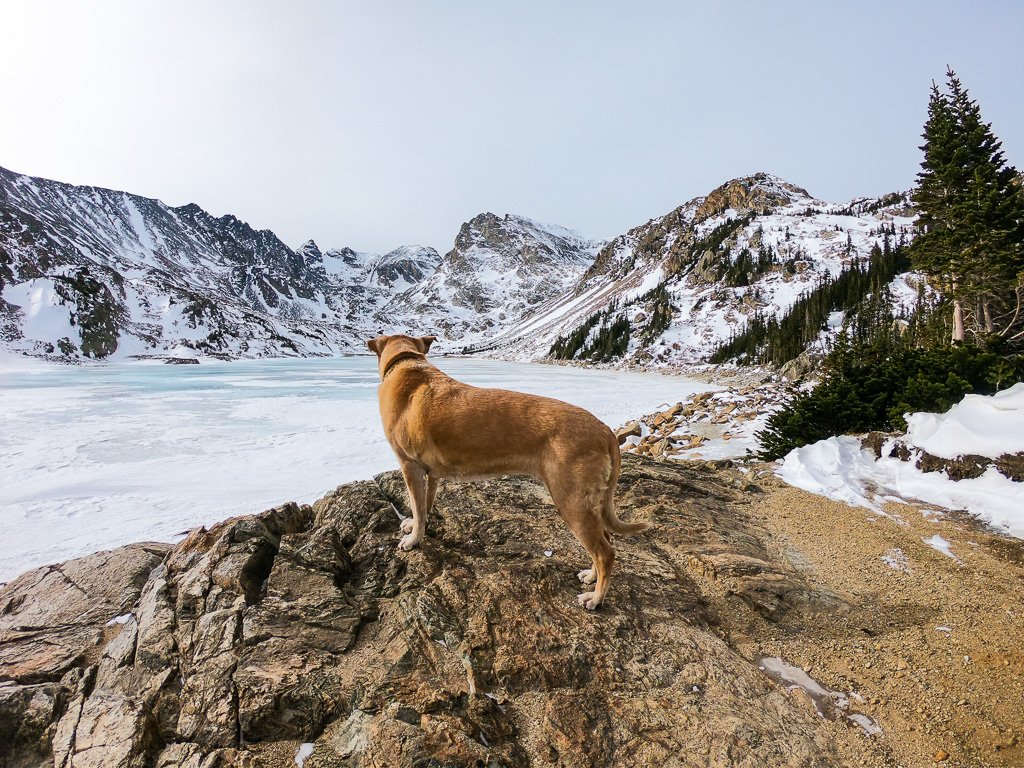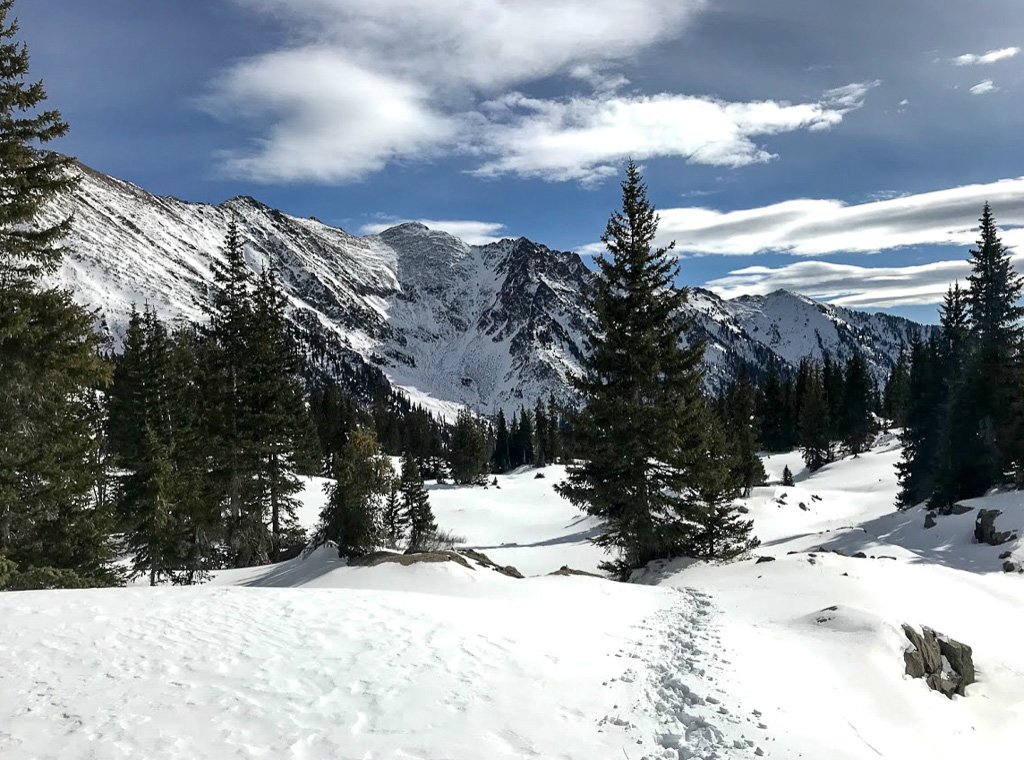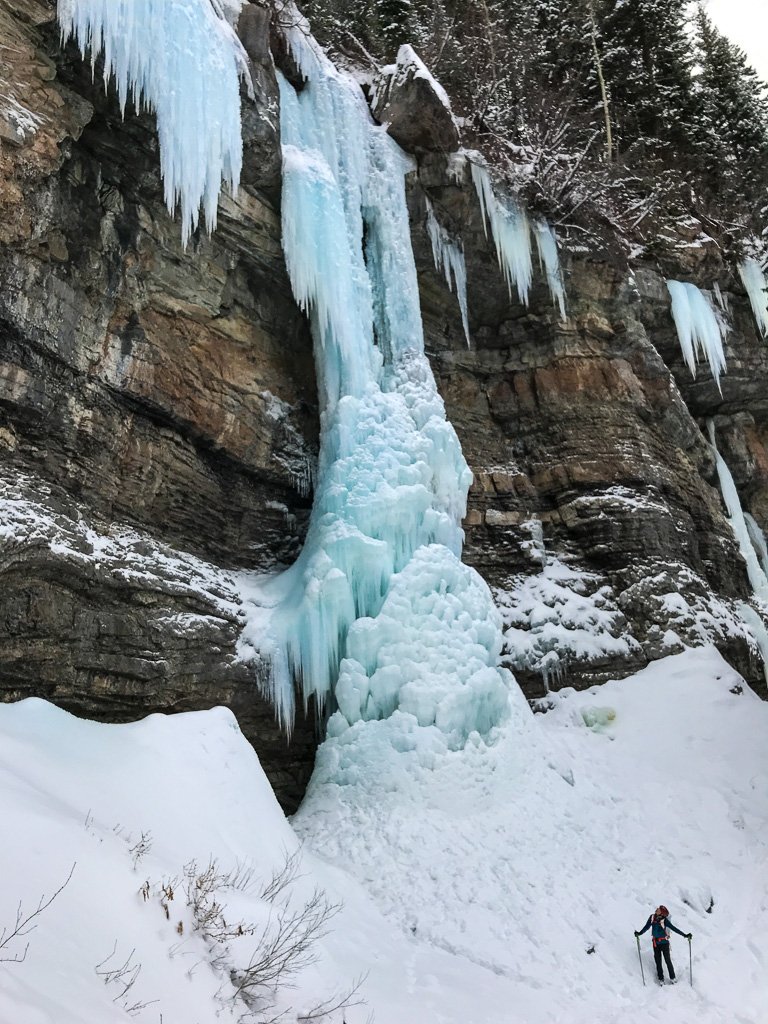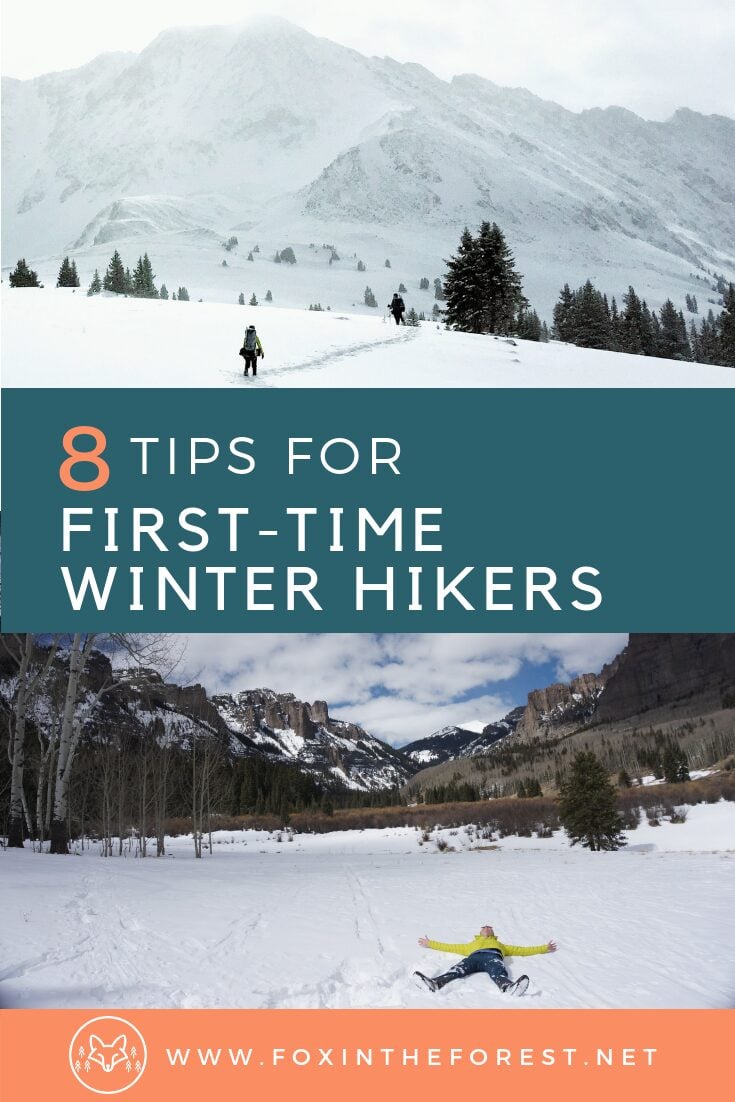Last Updated on April 21, 2024 by foxintheforest
Winter is finally here! It took a shockingly long time, but now the trails are filled with snow and the great white awaits. There are a lot of things to know before you head outdoors this winter. Here’s a look at a few handy winter hiking tips for beginners.
Be Prepared for Your First Winter Hike
Hiking in winter is certainly tougher. For starters, the ground is slippery and if the snowpack isn’t tough, you’ll punch right through. This often makes for a tough day out. Be prepared for wintery conditions and check the weather. Pack extra clothing, water and food. You burn more calories in the winter because you’re fighting to stay warm. Also, the dry winter air can dehydrate you quicker, because their is less moisture in the atmosphere. Use a water bottle instead of a bladder – the lines tend to freeze.
Second, be sure to check the weather, nothing dampens a wintery hike quite like blowing wind, drifting snow or a blizzard. Google around and check trail conditions (I love AllTrails for this). Make sure you pack some type of traction, like Kathoola microspikes to manage snowy trails and bits of ice. If you’re traveling on steep slopes (which you shouldn’t be if you’re just starting out) be sure you have an ice ax and crampons.
Hey ladies, I wrote up a guide specifically for winter hikers, check it out.
Be Avalanche Aware
If you plan on hiking in the mountains, be sure to watch out for avalanche dangers. Many hikers don’t even realize they are in avalanche territory, so be sure to at least have an avalanche awareness course under your belt (better yet, take an AIARE Level 1). Snow can kill and knowing what to look out for is half the battle (sound decision making is the other half). Always read local avalanche bulletins and check a topo map for potential avalanche terrain before heading out.
Dress in Layers
There’s a saying in winter, “be bold, start cold.” You’ll want to have plenty of layers to shed and add as you hike. However, since you’ll build heat quickly, it’s best to start a little cool, you can always throw on a fleece layer once you get moving. Bring a puffy and a wind layer for those frosty pit-stops. The object is to control your sweat. Try to keep layers off while moving to sweat less and layer up when you stop to avoid catching a chill from evaporating sweat.
Not sure what to wear? I’ve got a comprehensive outdoor clothing guide to suit any budget.
Yield to Faster Traffic
On snowy trails always yield to downhill traffic. This is the opposite of summer, where those in the throws of the uphill grind have the right of way. In winter, you have to contend with skiers, riders, and other modes of transport. For many of these sports, downhill stops are difficult and dangerous. Like that one time, I literally couldn’t get my splitboard to turn in the mushy snow. Luckily, no one was around for me to crash into, but there were plenty of trees and rocks to frustrate me. If you’re headed uphill keep an eye out for skiers, sleds, snowboarders, and bikes that may be moving quicker than you.

Don’t surprise the folks who kindly stop the flow of their uphill grind to let you fly past. Fast moving parties should holler the number of folks traveling with them as they pass, so those still cranking to make it up that hill know how many zippy skiers are coming their way.
Regardless if you are traveling up or downhill, never stop before a blind corner, such as a switchback or bend to avoid a potential collision. No one wants a yard sale on the trial or an insurance bill to follow.
Keep Fido Close
Since speeds vary on wintery trails, your dog could wander in harm’s way. As much as we love our fluffy friends, dogs don’t understand that they are in the way of downhill progress. Typically stop dead in their tracks, like a deer. Be sure to obey all leash laws, or, if the situation is dangerous, have your dog travel between members of your party. That way, someone can grab the pup in a jiffy if there’s a surprise.

If your dog decides to leave a dookie on the trial, clean it up. Burry the poopy problem off of the trail, deep in the snow, or pack it out in sensitive environments. If you can’t handle that, then consider leaving your dog at home. No one wants to see poop bags on the trail. Even if the intent is to pick it up on the way back, no one traveling your way while you’re out and about wants to see it. Tie it to your pack.
Some areas allow dogs to travel off leash if they are under voice command. If so, let Fido fly free! Just don’t let your dog chase wildlife. During the winter months, animals who don’t hibernate have to work hard to survive. It’s kind of like meeting a tough deadline. They are stressed out finding food anxiously awaiting spring similar to how you want a bad client with a tight deadline to just disappear. Allowing your dog to chase wildlife forces animals to spend precious energy that they need to flee from predators.
Before you go on your next hike, check out my Ultimate Guide to Hiking: Tips from the Beginner to the Pro.
Eat to stay warm
What? Eating for warmth? Yes, it’s a thing! Your body needs those calories to keep itself warm so snack up! Often times you’ll crave fatty snacks in winter, I’m here to tell you to INDULGE! Go nuts! Eat chocolate and other high-fat snacks while you hike in winter. If you love a hot meal, use a thermos like this Hydroflask Food Thermos to keep your meal nice and toasty.
Keep in Your Lane
With crampons, microspikes, snowshoes, skis, sleds, and bikes all using the same space, trails can get a bit crowded. Respect each sport and try to stay in your lane. For example, if you see ski tracks and you’re on snowshoes, consider making a snowshoe path instead of running amuck on a nicely laid skin track. Alternatively, if you’re on skis, steer clear of the snowshoe track. This isn’t always possible, but on trails where there is a little bit of room, keep a respectful distance from one another so everyone can enjoy some nicely laid out trails.

Be Friendly and Respect Your Wild Spaces
I can spot someone new to the outdoors on a trail from afar. Why? They don’t say hello, or even look at you. Trail space is friendly space. Everyone is excited to be outside and we have built a community of folks who love, respect and care about one another. So don’t be shy, say hello! Or at least a smile and a nod. Ignoring someone on the trail is like calling your grandmom “a dude bro,” you just don’t do it.
Also, just because there is snow on the ground doesn’t mean Leave No Trace Principals go out the window. In fact, it’s a sensitive time for Mother Nature. Life in many of these places hangs on by a thread, so don’t trash it. Try not to scar the environment, and pick up after yourself.

If you spot someone doing something harmful to the environment say something. Be that person! We all get upset when our favorite spots are trashed, so seek to educate instead of complaining.
Trail manners in the winter are important. Just like the seasons’ change, so do some of the tried and true rules. Keeping these winter hiking tips for beginners in mind will not only help keep you safe, but you’ll be creating a better space for everyone. Happy Hiking!

